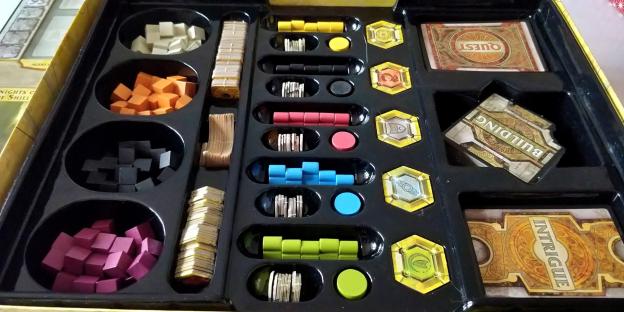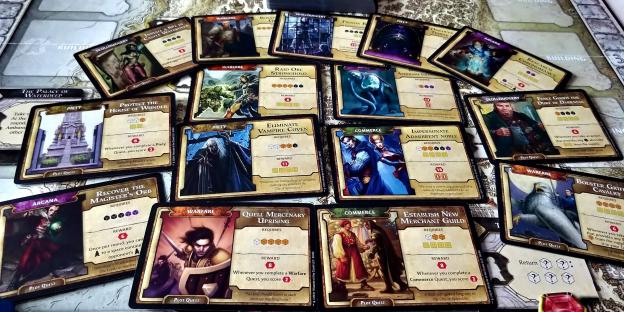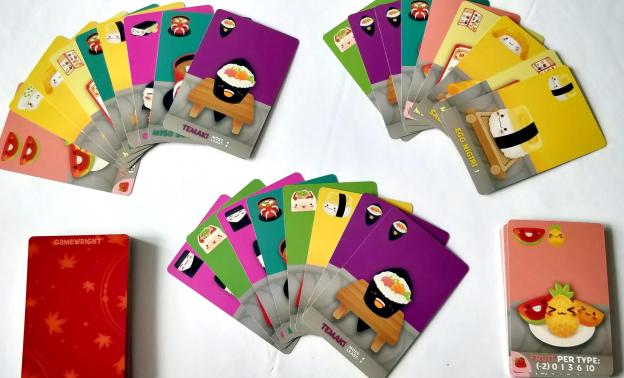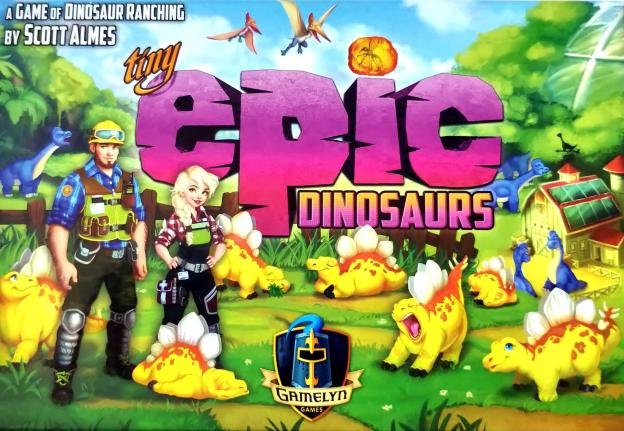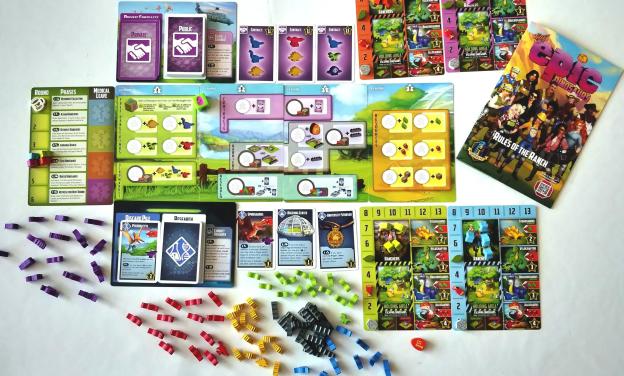
I made the mistake of looking up when the first Bill & Ted film came out and now I feel really old. How in glob’s name did they manage to get a sequel made in 2020?! Yeah, it’s been 29 years. Keanu Reeves is heading towards 60. Nostalgia bucks are big bucks I guess. Anyway, we’re not here to talk about movies, we’re here to talk about related board games. *sigh*
Bill & Ted’s Riff In Time from Warcradle Studios is very much like the 2020 movie, Face The Music. It’s alright. Didn’t hurt anyone. It passed the time. It was nice to look at the art and go “oh yeah, it’s them” (and then “this game has a minis expansion, doesn’t it”, to which the answer is yes, of course it does). All the artwork is of the painted minis, but without the expansion, you’ll be pushing cardboard figures in plastic stands (with the exception of the player minis) around. It’s designed for 1-4 players and takes around 80 laborious minutes (not that time should really matter when you have a time machine, right?).

The basic plot is that there’s all these rifts opening in time. This has caused personages of historical significance to wind up at places and times they really don’t belong. It’s up to Bill, Ted, Elizabeth, and Joanna to jump into their time booths (for the sake of the game they have one each, I guess they’re just giving them out like free samples these days. Hey future people, where’s my damn time booth? I’m British, so I guess it’s a phone box with a missing door that’s been smashed to crap and smells like stale piss and hepatitis. Plus, it’s probably stuck at a lorry park/lake in Kent, we’ll move on eh) and go put things right.
Each player picks a character who will have a special ability such as swapping their riff card or extra movement. They then get dealt out two objective cards and choose one to keep. These are personal missions you can complete to gain additional abilities going forward and will involve things like doing some repair work on multiple rifts, or having a particular character with you and travelling to a specific location. They’re then given one additional objective card, which you get as a free ability for the game, with no need to complete it (Excellent! *air guitars like a pro*).
To set up the board, you shuffle the location discs and place them in little divots on the board (which reminded me of Pokémon Master Trainer). Next you shuffle the location cards and place the personages of historical significance standees. Finally place the player minis in San Dimas and shuffle up the riff deck.
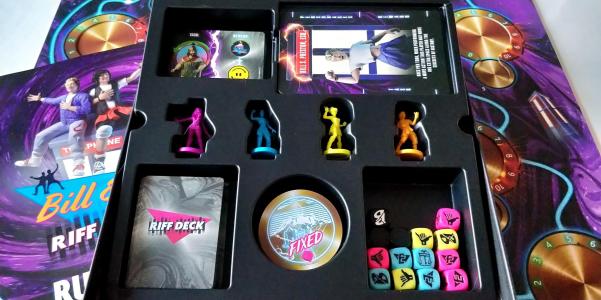
At this point in play, it’s your last chance to turn back, but you’re here for a review, so I guess I have to keep going. I do these things for you. I hope you appreciate it.
On your turn you draw a rift card and perform whatever action it demands. This could be something as simple as advancing the rift counter on your location; something bad, like advancing the rift counter on 5 separate locations; something annoying, like advancing a particular location’s rift counter and then transporting you, or even all players there. This can leave you feeling you have very little agency if you draw a lot of them in a row. There are like five Excellent cards in the riff deck that actually benefit you, but it’s a big deck so you don’t rely on them turning up when you need.
Next, players roll up to four action dice from their pool and perform actions based on what luck has brought. You do get one free re-roll, but after that, you’re probably on your own. There are four colours of dice, most of which show the same icons in differing amounts. There’s Move which allows you to travel through the circuits of time to connected locations; Interact which allow you to pick up characters, drop them off, or start repairing rifts in locations that have already had their correct personages of historical significance dropped off; Excellent which can be used as any other type of action; and Bogus which will cause you to raise the rift counter on your current location (or the San Dimas counter, if it’s already at its limit).

At the start of the game all locations are set to level 5, except San Dimas, which starts at whatever the player count is. Early on you’ll probably feel like things are a little dangerous as you will most likely feel like riff cards are seeing you constantly raising levels and really struggling to do anything to mitigate the gaping holes in freaking time!
As you pick up personages of historical significance (yes, the manual insists on using the full title every damn time) they will grant you temporary boons and/or banes while they’re travelling with you. Usually adding a blue die (mid-tier) to your pool and a move, interaction, excellent, or re-roll action to use each turn. Some of the more wild characters, like Genghis Khan, will add black Bogus dice, which you have to roll as one of your four each turn. These only have Bogus actions or blank sides. As such, it’s best to get these characters on a swift pick up and drop off service or risk a major bummer each turn.

Riff In Time (and yes, I was regularly tripping over riff and rift while playing this game, because both words come up so often) is a game of three parts. The early panic of trying to get things under control can feel kind of desperate, the solid mid-game where you’re starting to get into a rhythm and build your dice pool, and then the plodding, pedestrian final phase where you’ve got everything well under control and it’s just mopping up the last people and places.
Ultimately Riff In Time is… fine-ish, I guess. It’s easy to teach, easy to play, doesn’t require much in the way of strategy, but is ultimately quite a hollow experience. The manual spends too much time trying to be late 80s/early 90s cool and could have been simplified without really losing anything of the theme. The standees are of that design that doesn’t really grip the cardboard so won’t chew it up with continued use, but ultimately can’t always be picked up by the card part, as the plastic base just falls off. It’s fun enough for two thirds, but fails to stick the landing. It doesn’t stand up well against other modern board games and so just like Bill & Ted Face The Music, it feels about 20 years too late to be fully appreciated.
Pros:
- Dice feel pretty decent.
- Board art is nice, clear, and colourful.
Cons:
- Feels like a movie tie-in board game from 1991.
- Lots of empty space in the box.
- The central location marker for San Dimas never seems to sit properly on the board, making it easy to knock and change the value it’s pointing at.









